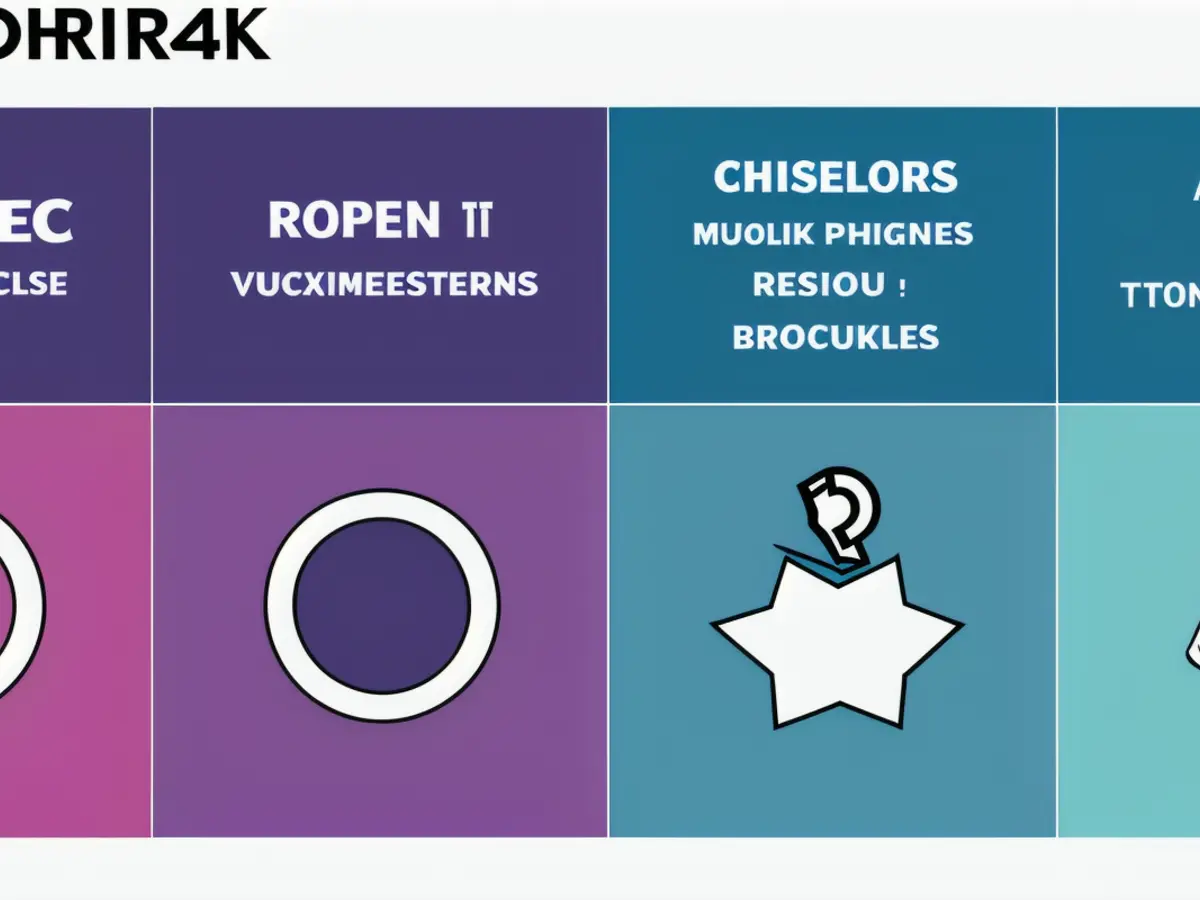Understanding IRA Functions: An Explanation of Individual Retirement Account Operations
An Individual Retirement Account (IRA) is a tax-favorable account designed to aid Americans in saving and investing for their retirement. Many financial institutions, including banks and brokerages, offer IRAs, which come in various forms. While most people are acquainted with the fundamental concept of an IRA, many are clueless about how they operate.
Here's a summary of the different types of IRAs, how they function in relation to withdrawal, eligibility, and investment, and how to establish an IRA.
Different types of IRAs and their operations
All types of IRAs operate in the same fundamental manner. Money contributed to the account may be invested in a variety of stocks, bonds, ETFs, mutual funds, and other investment vehicles. These investments are tax-deferred, meaning dividends and interest income received within an IRA aren't included in the owner's income annually, and taxes on any capital gains are postponed. In essence, as long as investments remain within an IRA, they will not result in any tax liability for the account owner.
Two main types of IRAs are generally available to individuals: traditional and Roth. Additionally, there are two specialized types of IRAs designed for small businesses and the self-employed.
- Traditional IRA: A traditional IRA is a "pre-tax" account, enabling you to potentially deduct your contributions from your taxable income annually, up to the annual limit set by the IRS. Your investments are allowed to grow and compound on a tax-deferred basis, so you won't have to pay capital gains and dividend taxes year after year. Once you withdraw the money, it's treated as income and may be taxable.
- Roth IRA: A Roth IRA is an "after-tax" account, meaning that you don't get a tax deduction for Roth contributions. However, your investments in a Roth IRA will grow tax-free until your retirement, and any qualified withdrawals from the account will be 100% tax-free. So the primary distinction between the two main types of IRA is when you reap the tax benefit - now (traditional) or later (Roth).
- SIMPLE IRA: A SIMPLE (Savings Incentive Match Plan for Employers) IRA is designed to allow small businesses to offer retirement benefits to their employees. Employees can make contributions, and employers also contribute to SIMPLE IRAs on their employees' behalf. The tax structure of a SIMPLE IRA is identical to that of a traditional IRA, meaning contributions are tax-deductible, but withdrawals will be considered taxable income.
- SEP-IRA: SEP stands for Simplified Employee Pension. This type of IRA is designed to enable employers to set aside funds for their employees' retirements. Other than the contribution limits (more on that in the next section), the primary difference between a SEP-IRA and a SIMPLE IRA is that SEP-IRA contributions are made only by the employer or self-employed account owner - employees cannot contribute to their SEP-IRAs. Like SIMPLE IRAs, SEP-IRAs are treated like traditional IRAs for tax purposes.
How IRA contribution works
IRA contribution limits vary over time, but for both the 2024 and 2025 tax years, individuals can contribute a maximum of $7,000 to their traditional or Roth IRAs. If you're 50 or older, you're allowed an additional $1,000 "catch-up" contribution as well, for a total of $8,000 in 2024 and 2025.
It's essential to understand that this limit is "per person," not per account. In other words, you can have two or more IRAs, but your total contributions for any given tax year cannot exceed the applicable IRS contribution limit. For instance, if you're over 50, you can contribute $5,000 to a traditional IRA and $3,000 to a Roth IRA for the 2025 tax year, assuming you're eligible to contribute to both account types.
IRA contributions can be made up until the tax deadline for each year. For example, you can make 2024 IRA contributions up until the 2024 tax return deadline on April 15, 2025.
SIMPLE IRAs and SEP-IRAs have somewhat higher contribution limits.
For 2024, employees are allowed to contribute up to $16,000. This limit rises to $16,500 in 2025. Workers 50 and older can make an additional $3,500 in catch-up contributions in both 2024 and 2025.
Employers can choose to match employee contributions up to 3% of salary or contribute a flat rate of 2% of salary for all employees regardless of the employees' contributions. Self-employed individuals with SIMPLE IRAs are considered both employee and employer for contribution purposes.
However, SEP-IRA contributions are all considered to come from the employer, who can contribute 25% of compensation, or $69,000 in 2024, and $70,000 in 2025, whichever is less.
Unlike conventional Individual Retirement Accounts (IRAs), not everyone qualifies to contribute to a Roth IRA. Eligibility for a Roth IRA is contingent upon income level, disregarding whether an individual is eligible for their employer's retirement plan. The Roth IRA income thresholds are assessed each year by the Internal Revenue Service (IRS).
On the other hand, Simplified Employee Pension Individual Retirement Accounts (SEP-IRAs) and Savings Incentive Match Plan for Employees of Small Employers Individual Retirement Accounts (SIMPLE IRAs) are not income-restricted. Designed for small employers and self-employed individuals, these account types do not impose any income ceilings if one meets the criteria for account opening and contributions.
Investment Options with IRAs
Following contributions to an IRA, an array of investment possibilities becomes accessible. You can opt for various stocks, bonds, or funds, or even choose to keep a portion of your money in cash, certificates of deposit (CDs), or money market accounts.
Entirely at your discretion, you can elect to invest in index funds, actively managed mutual funds, or exchange-traded funds (ETFs), if you prefer your retirement investments to operate autonomously. Alternatively, if you enjoy researching individual stocks, you can utilize an IRA to invest in them directly.
IRA Withdrawal Procedures
The standard age for penalty-free IRA withdrawals is 59 1/2, which is deemed the full retirement age. You are permitted to withdraw funds from your IRA for any reason after reaching this age.
There are also specific scenarios where you can withdraw from your IRA early, such as the ability to withdraw up to $10,000 for a first-time home purchase. Furthermore, you can withdraw funds for qualified higher education expenses, making an IRA a potential avenue for college savings.
If you choose to withdraw funds from your IRA before the age of 59 1/2 without a legitimate reason, you may be subject to a 10% early-withdrawal penalty from the IRS in addition to applicable taxes. However, if you have a Roth IRA, withdrawals from your contributions (not investment gains) can be made at any time without penalty.
Non-Roth IRA account owners are mandated to begin annual withdrawals starting at the age of 73, while Roth IRAs are exempt from required minimum distributions (RMDs) as long as the account owner is alive.
It is important to note that an IRA cannot be borrowed against, meaning there are no IRA loans. Unless a distribution from an IRA is rolled over to another qualified retirement account within 90 days, it will be treated as a withdrawal.
Opening an IRA
IRAs are commonly offered by major brokerage firms. Opening an IRA typically is a swift and effortless process. The procedure varies among brokerages, but you'll usually be required to complete a brief application to create the account, providing personal information like your Social Security number (for tax reporting purposes). There are various methods to make your initial deposit, such as mailing a check, setting up a bank draft, and completing a wire transfer. You can also establish regular contributions from your bank account.
Related Retirement Topics
Roth IRA Income Limits
Certain types of IRAs carry income limits. Familiarize yourself with them.
2024 and 2025 IRA Contribution Limits
Learn the contribution limitations for IRAs based on age and year.
2024 and 2025 IRA Rules
Each IRA type is subject to its specific rules. Understand them.
IRA Rollover
Transferring your retirement funds to an IRA is a smart decision, but be aware of the rules.
After understanding the different types of IRAs and their operations, it's crucial to consider the income limits for Roth IRAs. Unlike SIMPLE and SEP IRAs, Roth IRAs have income thresholds set by the Internal Revenue Service (IRS).
In the context of retirement savings and finance, managing the contributions to your various IRAs is essential to maximize your tax benefits. Remember that the IRA contribution limit per person, not per account, is $7,000 for the 2024 and 2025 tax years, with a $1,000 catch-up contribution for individuals aged 50 or older.
In order to enjoy a stress-free retirement, it's essential to plan your retirement financing strategically, considering various investment options and withdrawal procedures. Withdrawals from a traditional IRA before the age of 59 1/2 can result in a 10% early-withdrawal penalty, while Roth IRA contributions can be withdrawn tax-free at any time. As you approach retirement, be aware that non-Roth IRA account owners are required to begin annual withdrawals starting at age 73, while Roth IRAs are exempt from required minimum distributions (RMDs) as long as the account owner is alive.




